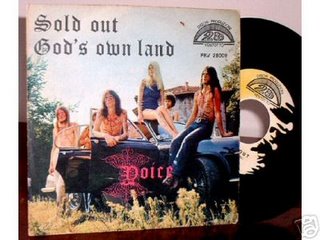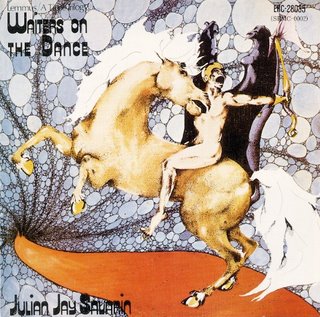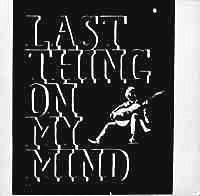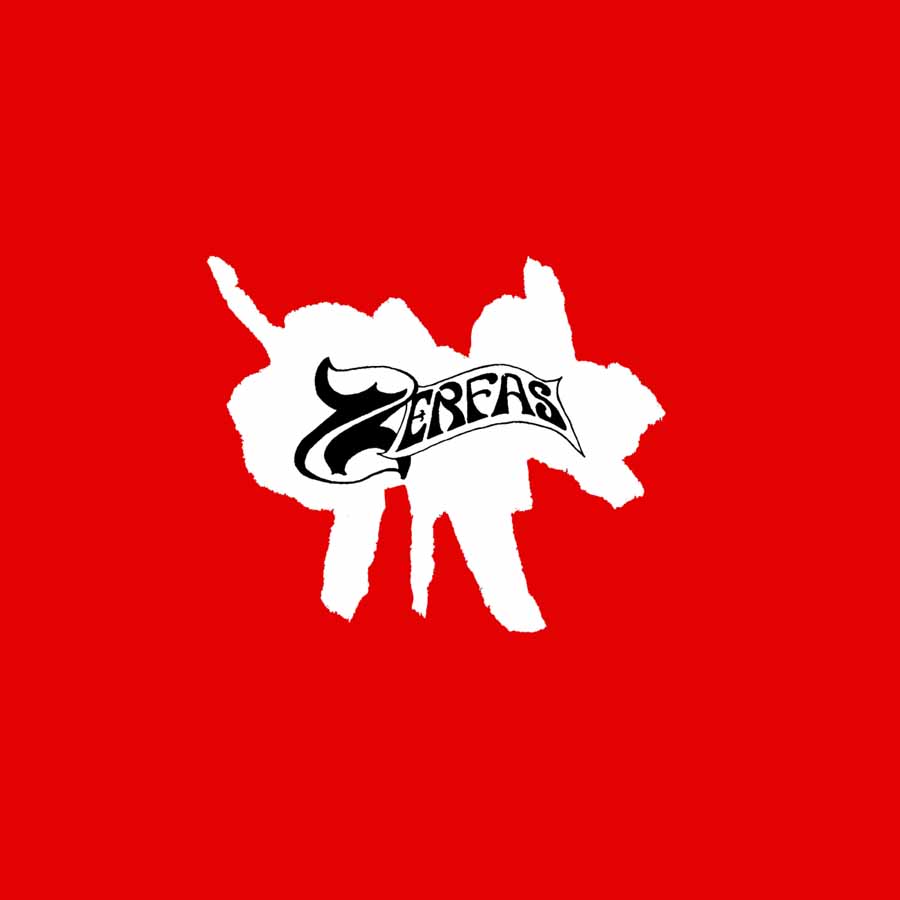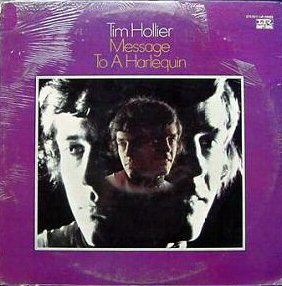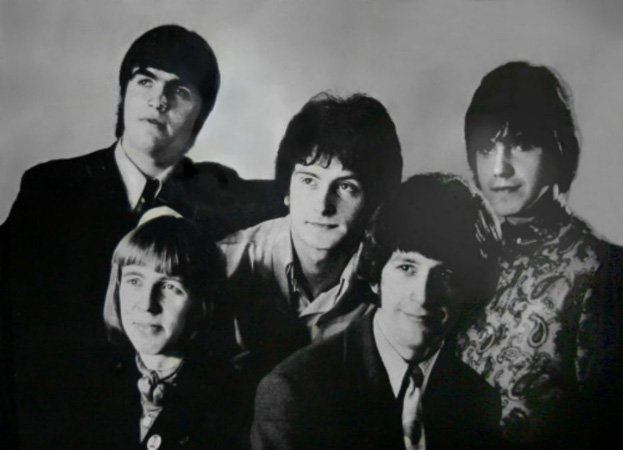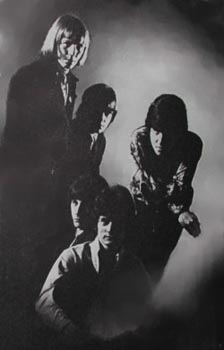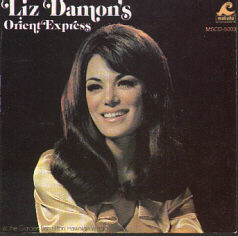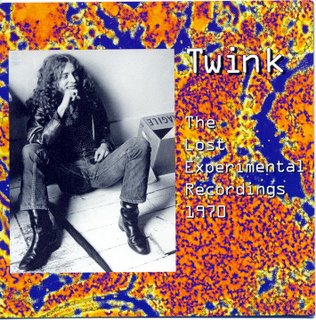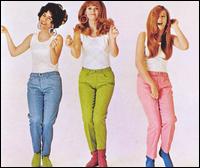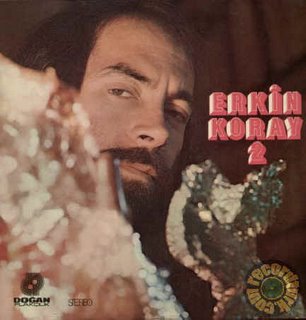30-07-06 - 06-08-06
Friday, August 04, 2006
Darius - 1968 - Darius
Dear Friends,
I just wanted to let you know that my dear friend and brother
Robert J. Ott aka. DARIUS has passed away today on the 3rd of August 2006 at 1:15 am.
He had been suffering from cancer for quite some time now.
His wife Barbara and I will continue to complete his life's work, since there´s still
a huge musical legacy left by him for the world to discover.
Rest in peace Bobby, you will be deeply missed!
Miguel Rodriguez
____________________
So, honoris causa again,
would like to give you a chance to get and enjoy his 1st amazing psychedelic album of year 1968 !
 DARIUS-Same (1968)
DARIUS-Same (1968)02 - Dawn
03 - Mist-Veiled Garden
04 - I´m The Man
05 - I Feel The Need To Carry On
06 - Dirty Funky Situation
07 - Blow My Mind
08 - Sweet Mama
09 - Ancient Path
10 - Hear What I Say
11 - Don´t You Get The Feeling (Bonus)
12 - A Woman Like You (Bonus)
13 - Peace & Love (Bonus)
Darius was based in Hollywood, California and was backed by Goldenrod andMike Deasy.
The album is all originals and the music very melodic with upfront vocals and a style veering towards progressivism. Particularly stunning are Mist-Veiled Garden and I Feel The Need To Carry On. Funk and blues influences are more evident on Side two of the album.
Producer Pat Glasser went on to work with Three Dog Night.
Darius went on to record a 45 for Metromedia as Bobby Joe Ott, Flint River Inn, but the company was bought out by Bell, and the track sank in the changeover.
He then returned to his home town of Cleveland, Ohio and under the name of Darius James played the club circuit.
In 1974 a bad automobile accident put his musical plans on hold and he spent the next six years having re-constructive surgery.
In 1980 he put a band called The Earthlings together and went back to Hollywood to play the Showcase Club Circuit and despite many recordings, no deal was forthcoming.
In 1990 Darius went back to Cleveland and met Barbara McFaul aka: Honeygirl. He then concentrated his efforts on recording and producing Honeygirl, also producing/directing three music videos with her.
In 2000 he started singing/writing and recording again along with Honeygirl and The Earthlings...
Arthur Lee & Love
 ARTHUR LEE & LOVE
ARTHUR LEE & LOVESADLY,
WE INFORM YOU THAT LEGENDARY FRONTMAN OF LOVE,HAS PASSED AWAY AT THE AGE OF 61
Artur Lee was suffering from acute lymphoblastic leukemia
Lee's manager, Mark Linn, sent out the following email just minutes ago:
"Arthur Lee died peacefully at Methodist Hospital in Memphis, a little after four in the afternoon Aug 3, 2006 with his wife Diane by his side. His death comes as a shock to me because Arthur had the uncanny ability to bounce back from everything, and leukemia was no exception. He was confident that he would be back on stage by the fall.
"When I visited with him recently, he was visibly moved by the stories and pictures from the NYC benefit concert. He was truly grateful for the outpouring of love from friends and fans all over the world since news of his illness became public. We watched the DVD of the great House of Blues concert from '03, and he told me how much he appreciated [backing band] Baby Lemonade's dedication to his music.
"Arthur always lived in the moment, and said what he thought when he thought it. I'll miss his phone calls, and his long voice messages, but most of all I'll miss Arthur playing Arthur's music."
HONORIS CAUSA
UNFORTUNATELY , SUCH A MOMENT WE HAVE TO REMIND TO OURSELVES HIS MARVELLOUS ABILITY TO COMPOSE SUCH A MUSICAL HYMNS.
HAVE A NICE TRIP, ARTHUR !
WE WILL REMEMBER YOU TILL TO MEET YOU IN HELL !!
_____________________
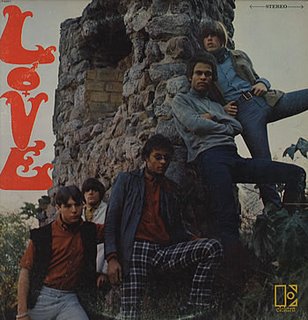 Love - 1966 - Love
Love - 1966 - Love- My Little Red Book (B. Bacharach/H. David)
- Can't Explain (A. Lee/J. Echols/J. Fleckenstein)
- A Message to Pretty (A. Lee)
- My Flash on You (A. Lee)
- Softly to Me (B. Maclean)
- No Matter What You Do (A. Lee)
- Emotions (A. Lee/J. Echols)
- You I'll Be Following (A. Lee)
- Gazing (A. Lee)
- Hey Joe (D. Valenti)
- Signed D. C. (A. Lee)
- Coloured Balls Falling (A. Lee)
- Mushroom Clouds (A. Lee/J. Echols/K. Forssi/B. Maclean)
- And More (A. Lee/B. Maclean)
- Arthur Lee: lead vocals, harmonica, percussion (drums on "Can't Explain", "No Matter What You Do", "Gazing" and "And More")
- John Echols: lead guitar
- Bryan MacLean: rhythm guitar, vocal (lead vocal on "Softly to Me" and "Hey Joe")
- Ken Forssi: bass
- Alban "Snoopy" Pfisterer: drums (except on "Can't Explain", "No Matter What You Do", "Gazing" and "And More")
 Love - 1967 - Da Capo
Love - 1967 - Da Capo[mono-stereo]
- Stephanie Knows Who (mono mix) (A. Lee, 2:38)
- Orange Skies (mono mix) (B. MacLean, 2:54)
- ¡Que Vida! (mono mix) (A. Lee, 3:43)
- Seven & Seven Is (mono mix) (A. Lee, 2:26)
- The Castle (mono mix) (A. Lee, 3:05)
- She Comes in Colors (mono mix) (A. Lee, 2:47)
- Revelation (mono mix) (A. Lee/B. MacLean/J. Echols/K. Forssi, 19:02)
- Stephanie Knows Who (stereo mix) (A. Lee, 2:34)
- Orange Skies (stereo mix) (B. MacLean, 2:53)
- ¡Que Vida! (stereo mix) (A. Lee, 3:43)
- Seven & Seven Is (stereo mix) (A. Lee, 2:19)
- The Castle (stereo mix) (A. Lee, 3:03)
- She Comes in Colors (stereo mix) (A. Lee, 2:48)
- Revelation (stereo mix) (A. Lee/B. MacLean/J. Echols/K. Forssi, 19:04)
- Seven & Seven Is (*) (A. Lee, 3:13)
- Arthur Lee: lead vocals, harmonica, guitar, percussion
- Johnny Echols: lead guitar
- Bryan MacLean: rhythm guitar, vocal
- Ken Forssi: bass
- Alban "Snoopy" Pfisterer: organ, harpsichord (drums on "Seven and Seven Is")
- Michael Stuart: drums, percussion
- Tjay Cantrelli: saxophone, flute, percussion
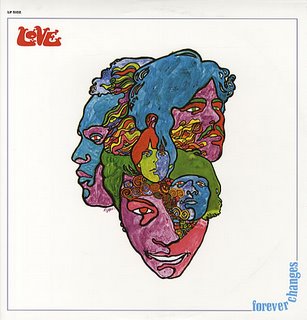 Love - 1967 - Forever Changes (Deluxe Edition)
Love - 1967 - Forever Changes (Deluxe Edition)part 1
part 2
- Alone Again Or (Maclean, – 3:16)
- A House Is Not a Motel (Lee, – 3:31)
- Andmoreagain (Lee, – 3:18)
- The Daily Planet (Lee, – 3:30)
- Old Man (Maclean, – 3:02)
- The Red Telephone (Lee, – 4:46)
- Maybe the People Would Be the Times or Between Clark and Hilldale (Lee, – 3:34)
- Live and Let Live (Lee, – 5:26)
- The Good Humor Man He Sees Everything Like This (Lee, – 3:08)
- Bummer in the Summer (Lee, – 2:24)
- You Set the Scene (Lee, – 6:56)
- Hummingbirds (Lee, – 2:43)
- Wonder People (I Do Wonder) (Lee, – 3:27)
- Alone Again Or (alternate mix) (MacLean, – 2:55)
- You Set the Scene (alternate mix) (Lee, – 7:01)
- Your Mind And We Belong Together (tracking session highlights) (Lee, – 8:16)
- Your Mind And We Belong Together (Lee, – 4:28)
- Laughing Stock (Lee, – 2:33)
- Arthur Lee: lead vocals, guitar, arranger
- John Echols: lead guitar
- Bryan MacLean: rhythm guitar, vocals, arranger (lead vocals on "Alone Again Or" and "Old Man")
- Ken Forssi: bass
- Michael Stuart: drums, percussion
- with
- Billy Strange: guitar on "Andmoreagain" and "The Daily Planet"
- Don Randi: piano on "Andmoreagain" and "The Daily Planet"
- Hal Blaine: drums on "Andmoreagain" and "The Daily Planet"
- Carol Kaye: bass on "Andmoreagain" (presumably)
- David Angel: arranger, orchestrations
- Orchestra: Robert Barene, Arnold Belnick, James Getzoff, Marshall Sosson, Darrel Terwilliger (violins); Norman Botnick (viola); Jesse Ehrlich (cello); Chuck Berghofer (double bass); Bud Brisbois, Roy Caton, Ollie Mitchell (trumpets); Richard Leith (trombone)
but the most important is,
that included their 7th single ''Your Mind And You Will Belong Together / Laughing Stock
(1968, Elektra EK 45633 )
PERSONAL VIEW: This album is a classic masterpiece of the 60's and one of the greatest albums ever made !
_____________________________
posted by Opa-Loka and Optical Sound
reviewed by Optical Sound.
Tonton Macoute - 1971 - Tonton Macoute
 Tonton Macoute - 1971 - Tonton Macoute
Tonton Macoute - 1971 - Tonton MacouteTracks :
1. Just Like Stone (6:30)
2. Don't Make Me Cry (8:48)
3. Flying South In Winter (6:26)
4. Dreams (3:57)
5. You Make My Jelly Roll (7:58)
6. Natural High part 1 (6:55)
7. Natural High part 2 (3:53)
Line-up
- Paul French / acoustic & elelectric pianos, organ, vibes, vocals
- Chris Gavin / bass, acoustic & electric guitars
- Dave Knowles / Alto & Tenor saxes, flute, clarinet, vocals
- Nigel Reveler / drums, percussion
A little-known band. Musically in the progressive-jazz genre, the album was released on RCA's now collectable Neon label. It's quite unusual and includes a number of woodwind solos. Despite being recorded under the supervision of Howard and Blaikley it's musically miles away from that duo's sixties pop format. Paul French went on to play in Voyager in the late seventies and early eighties.
Wednesday, August 02, 2006
Lang'syne - 1976 - Lang'syne
 Lang'syne - 1976 - Lang'syne
Lang'syne - 1976 - Lang'syneTracks :
1. Medina (8:29)
2. Morning (3:32)
3. Changing (6:46)
4. Cynghanedd (7:49)
5. A Very Sarcastic Song (6:43)
6. Carnivore (4:02)
7. Mignon (1:51)
8. Lady Mary (3:48*)
Musicians:
Edbert Froese - guitar, Keyboard, Vocals, Sitar, Psalter
Matthias Mertler - Guitar, Vocals, Percussion, Glockenspiel
Ulrich Nahle - Flute, Guitar, Vocals, Percussion
Lang'syne appear to be another one-album wonder as they released an interesting self titled folk album in 1976. Lang'syne sing in English and their brand of folk bares little resemblance to the earlier kraut-folk bands like Broselmaschine, Holderlin, and Witthuser and Westrupp. Throughout the album, there are small touches of a German and Eastern ethnic feel to the music, but for the most part their sound is a bit more Anglo influenced. Many of the lyrics and much of the music appear to have a dark, longing quality which results in the album sounding a bit mystical, and occasionally even Renaissance-style. The standout track is the instrumental 'Cynghanedd'. 'Cynghanedd' begins like an Eastern-influenced ballad, or "Melodie der Natur" as described in the CD sleeve. This track utilizes natural sound of birds and insects and ends with an interesting interplay of 'dueling'-guitar chord sequences. Another track worth mentioning is 'Medina' which has sporadic touches of Witthuser and Westrupp sprinkled throughout.
Highly Recommended!
Get It Here
Dimentia 13 - 1985 - Dimentia 13
 Dimentia 13 - 1985 - Dimentia 13
Dimentia 13 - 1985 - Dimentia 13 [MIRLP 116]
We Are
I Think I Should Know
Farmer Brown
Lysergic Mental Vibrations
I Am A Whale
Politician
Last In Line
Colors
Psilocybin Spot
The Lizard
Engineered By Scott Godwin
Recorded At Island Studios, North Royalton, Ohio
Cover By Vince Rancid
"Syd Barrett acolytes from Ohio! This tasty goblet of swirling, bubbling psych slips down a treat. The heavily acid etched instrumental 'Lysergic Mental Vibrations' is am excellent contrast to the more whimsical joys of the opening 'We Are' and the aquatic lunacy of 'I Am A Whale.' Over on side two, 'Last In Line' is pretty flawless Chocolate Watchband respray job while 'Colors' employs backwards tape jiggery-pokery as an eerie voice creeps in and out of the mix having escaped from somewhere you probably don't want to know about. 'Psilocybin Spot' fulfills the same role as side one's 'Lysergic...' and is as effective. Finally, 'The Lizard' is an acoustic based trip into the mynd of the vocalist who is driven to bizarre flights of fantasy by a brief, and unexpected, FX bombardment. Sensibly, and probably to avoid the unwanted attentions of like minded space cadets, the band members remain anonymous and the murky photo on the sleeveadds to the mystery of this wickedly warped caboodle of crazed vignettes."
Analogy - 1972 - Analogy + pre Analogy single
 Analogy - 1972 - Analogy
Analogy - 1972 - AnalogyTracks:
Dark Reflections (7:00)
Weeping May Endure (4:50)
Indian Mediation (4:10)
Tin's Song (1:40)
Analogy (9:45)
The Year's At The Spring (4:35)
Pan-Am Flight 249 (5:15)
Musicians:
Jutta Nienhaus - vocals
Hermann-Jürgen "Mops" Nienhaus – drums
Wolfgang Schoene – bass
Martin Thurn - guitars, flute and bongos
Nikola Pankoff - keyboards (mainly Hammond organ)
Discography:
Analogy The Suite (Rec. 1980, Rel 1993 (Ohrwaschi) /2000 (Akarma)
25 Years Later (1996, Ohrwashi)
Analogy's sound is thick and heavy in a psychedelic way rather than a hard rock way, with Schoene's bass tone very deep, matching the sometimes sultry vocals of Neinhaus. The instruments of focus, other than Nienhaus' voice, are the guitar of Thurn and Schoene's bass. Except when they are in a solo setting, Pankoff's organ is back in the mix, and yet very much present. Lyrically, the album is fairly sparse, and without a lot of reading between the lines, or, in the case of "Pan-Am Flight 249," some context, they don't seem to make a lot of sense. But they don't have to, as the ear is drawn to how Neinhaus sang, not what she sang.
The centerpiece of the album is the nearly 10 minute "Analogy" – the track from which the band took their name. It begins as a subtle atmospheric piece with just Pankoff's organ, but gradually fades in to become a full on rocker, bringing to mind The Who a bit. Of the core album's 7 tracks, this is the one that is, perhaps, the most proggy in nature, though it gets there by way of psychedelia. The watery organ work recalls Ray Manzarek's in tone a bit, as on The Doors' "Riders On The Storm." The Doors played extended, arty, pieces like this. In another passage, Thurn's initially delicate guitar lines recall Pink Floyd ("Us And Them" came to mind), before a sweet, but high-toned guitar takes the lead voice, playing in sad, melancholy notes.
They follow this up with the upbeat, energetic "The Year's At The Spring," which made think of something from the early days of Jefferson Airplane, though Neinhaus doesn't sound like Grace Slick exactly, I could easily see Slick singing this way stylistically. Again, it is a showcase for Thurn, Schoene and Pankoff, but mostly Thurn, as he plays a brassy toned solo, leaned into a distinctively Hammond organ solo from Pankoff. Haven't mentioned drummer Nienhaus much, but his performance is solid throughout, keeping everything moving along. Nienhaus's story has a tragic ending, as he committed suicide in 1984 while he was in the end stages of his fight against AIDS.
The other thought that came to me as I was listening to Analogy was anachronistic as I thought of The Red Masque during the dark, gloomy, and some times funereal, "Dark Reflections" as well during the equally dark and gloomy "Pan-Am Flight 249" -- whether this song is in response to some specific incident around the time, I don't know. I did "Google" it, but found only references to the track in the tracklisting of various reviews of this album. This comparison was not just in the vocals of Jutta Neinhaus, which are richly ethereal and lilting, but rather in the whole vibe of each piece.
Another of the album's highlights is "Weeping May Endure" which, aside from some brief lilting vocals from Nienhaus, is an instrumental with Thurn's guitars leading the way. Here, too, Pankoff's organ gets a moment in the spotlight.
Once you "get past" finding some of vocals "flower child" like -- but pleasant to the ear -- and so very much of the 70s, you realize that the band combined all their respective talents to create a solidly good album. Produced by Aldo Pagani, who permitted the band only two recording days (all he was willing to invest), the album seems far from hurried or rushed. It's easy to see why this gem in it's original vinyl version is a sought-after item, potentially fetching US$1500.
Bonus :
16 Horsepower - Black Soul Choir (Video Clip)
He ain’t made of flesh & bone
He’s the one who sits up close beside you
An when he’s there you are alone
Every man is evil yes an every man is a liar
An unashamed with the wicked tongues sing
In the black soul choir
Yes an no man ever seen the face of my lord no
Not since he left his skin
He’s the one you keep cold on the outside girl
He’s at your door let him in
O I will forgive your wrongs
Yes I am abel
An for my own I feel great shame
I would offer up a brick to the back of your head boy
Poll (Greece) - 1971 - Anthrope (Human)
1. POLL MEANS LOVE
2. FOVOI MOU
3. PSAHNO NA VRO TO FILO MOU
4. STIN PIGI MIA KOPELA
5. 2.000 LOGOI
6. PARASKEYAS KAI THOMAS
7. KAI MILONTAS GIA ANTHROPOUS
8. O GEROS
9. HROMATA
10. PICCADILLY CIRCUS
11. GIATI EHEI MAKRIA MALLIA
12. SIMERA KAI AYRIO
13. PESTE MOU TI THELO - POLL SIMAINEI AGAPI - POIOS THA DEIXEI
14. I GENIA MAS
15. ELA ILIE MOU
16. ANTHROPE AGAPA
Kostas Tournas (Guitar, Vocals)
Stavros Logaridis (Bass, Vocals)
Robert Williams (Guitar, Vocals)
Kostas Papaioanou (Drums)
[many guest artist and singers...]
Great Psychedelic Folk-Pop Album !!!
Στον απόηχο της «εποχής των λουλουδιών» και της γενιάς του Woodstock εμφανίσθηκε ένα από τα πιο αγαπημένα γκρουπ της δεκαετίας αυτής, οι POLL, που κατ’ εξοχήν προσπάθησαν να μεταφέρουν κάτι από τη χίπικη αισθητική στον ελλαδικό χώρο. Μετά το θαυμάσιο 1ο τους single του ‘71 «Άνθρωπε αγάπα/Ελα ήλιε μου» που συνάντησε προβλήματα με τη λογοκρισία της χούντας λόγω των στίχων του, κυκλοφορεί την ίδια χρονιά και το 1ο τους άλμπουμ «Άνθρωπε…» με εξώφυλλο ένα……..ταγάρι. Το LP είναι πέρα για πέρα εκπληκτικό. Όλα τα τραγούδια είναι υψηλού συνθετικού επιπέδου, ώστε δύσκολα μπορείς να ξεχωρίσεις κάποιο. Δεν μπορώ όμως να μην επισημάνω ιδιαιτέρως το «Στην πηγή μια κοπέλα», ένα μοναδικό κομμάτι, κατ’ εμέ το καλύτερο που έγραψαν ποτέ κι ένα απ’ τα καλύτερα που έβγαλε ποτέ η χώρα μας. Μετά από ένα 2ο single «Η γενιά μας/Αετοί» που αποτελεί και το μανιφέστο μιας ολόκληρης γενιάς βγάζουν το ‘72 το 2ο τους ομώνυμο LP πρωτοτυπώντας πάλι στο εξώφυλλο που περιείχε 12σέλιδο έγχρωμο βιβλίο κόμικ με ήρωες τα μέλη του γκρουπ. Κατώτερο από το πρώτο, παρ’ όλ’ αυτά όμως ένα πολύ καλό LP. Το ύφος των POLL ήταν το φολκ-ροκ. Το γκρουπ ολοκλήρωσε την παρουσία του μ’ ένα τελευταίο single «Μολυβιές φωτογραφίες/Όσες φορές». Βασικός πυρήνας του ήταν οι Κώστας Τουρνάς, Ρόμπερτ Γουίλλιαμς και Σταύρος Λογαρίδης. Για ένα διάστημα πέρασε απ’ τις τάξεις του ως τραγουδίστρια και η Δέσποινα Γλέζου. Πρώτος που ακολούθησε προσωπική καριέρα ήταν ο Τουρνάς. Από τα LP’s που έβγαλε καλύτερο ήταν τα «Απεραντα Χωραφια» (‘72), ένα δομικώς σύνθετο για την εποχή του concept άλμπουμ με επιρροές από προοδευτικό ροκ. Η υιοθέτηση αργότερα ενός πιο απλουστευμένου ύφους θα τον φέρει και πιο κοντά στην εμπορική επιτυχία. Απ’ τα επόμενα LP’s του σε ποπ-ροκ φόρμες πιο αξιόλογα ήταν τα «Αστρόνειρα» (’73), «Κυρίες και κύριοι» (‘74) και «Λευκά φτερά» (‘75). Ο Γουίλλιαμς έβγαλε μερικά LP’s σε soft ποπ-ροκ ύφος. Ο Λογαρίδης σχημάτισε τους ΑΚΡΙΤΑΣ που μετά από ένα single κυκλοφόρησαν το ‘73 και το μοναδικό τους ομώνυμο LP, ένα από τα κορυφαία στον ελλαδικό χώρο όλων των εποχών. Το άλμπουμ κινείται στο χώρο του προοδευτικού ροκ και χαρακτηρίζεται από τις συχνές αλλαγές θεμάτων. Ειδική μνεία πρέπει να γίνει για τα εξαιρετικά κιθαριστικά μέρη του guest Δήμου Παπαχρήστου, πρώην μέλους των ΕΞΑΔΑΚΤΥΛΟΣ. Πρωτοποριακό άλμπουμ και δισκάρα!!! Οι ΑΚΡΙΤΑΣ μπορούν να θεωρηθούν ως οι Έλληνες EMERSON, LAKE+PALMER. Μετά τη διάλυσή τους ο Λογαρίδης ακολούθησε σόλο καριέρα ηχογραφώντας το 1ο του ομώνυμο LP (‘78) και το «Σε άλλη γη» (‘80) σε προοδευτικό ροκ πιο εμπορικού ύφους από το παρελθόν.
Tuesday, August 01, 2006
Julian Jay Savarin - 1973 - Waiters of the Dance
Personnel:
John Dover – Bass
Nigel "Zed" Jenkins – Guitar
Jo Meek – Vocals
Roger Odell – Drums
Julian Jay Savarin – Keyboards
Album:
Waiters On The Dance (Birth RAB 2) 1973
(reissued on Five Hours Back (TOCK 002) in 1987)
CD:
Akarma AK 161, 2001
45:
I Am You/Kizeesh (Lyntone LYN 3426) 197?
(issued as a Corgi Books sampler)
Julian Jay Savarin was the leader and main songwriter in Julian's Treatment. He wrote, directed, and played on the 1970 double concept album, ‘A Time Before This’. It is based on the book, ‘Lemmus, A Time Trilogy - Waiters On The Dance’, which Savarin wrote. A poet and writer, as well as a musician, he used his multi-talented focus to his advantage on many different projects.
‘Waiters On The Dance’, originally released in 1971 and re-released by Akarma Records in 2001, comes attractively packaged with the original artwork in the vinyl and CD formats.
A concept album with excellent music seems to be more ear catching than any other type of recording. When you know that there is a story behind the music, better yet an entire book, the entire picture begins to formulate in your mind’s eye. When you then take that formula and add powerful guitar riffs, grinding organ and Lady Jo Meek's (later with Catapilla) voice to tell the story and set it all in motion with feeling, you have all the elements for a successful musical endeavour that spells progressive rock. This LP is a classic that deserves an abundance of attention by those that appreciate what this captivating genre has always had to offer its devout listeners. I am like many of you; I had never heard of this album before and felt entirely blown away by its impact. I am sure you will be too, and then you will wonder why you had not heard of this sooner. As the saying goes… better late then never, get it now!
The books in Savarin's trilogy are:
Lemmus One: Waiters on the Dance,
Lemmus Two: Beyond the Outer Mirror and
Lemmus Three: Archives of Haven, all in the sci-fi genre.
Effervescent Elephants (Italy) - 1987 - Something to Say
 Effervescent Elephants (Italy) - 1987 - Something to Say
Effervescent Elephants (Italy) - 1987 - Something to SayOUT OF THIS WORLD RELEASE ON THE ITALIAN ‘PSYCH-OUT’ LABEL. THIS IS A REAL ACID PSYCHEDELIC MASTERPIECE THAT GATHERS INFLUENCES FROM ‘SYD BARRETT’, ‘RORY GALLAGHER’ TO ‘NINO ROTA’..
Tracks :
01 To The Morning Blue
02 Europes Blues
03 LSD
04 3 O'clock
05 Maize
06 Hey Mr. Paul Smith
07 Inian Side
08 Something To Say
09 All Tomorrows Parties
Band :
Ludovico Ellena- g, voc
Konrad Giolito - voc
Aldo Casciano - dr
Lorenzo Proverbio - keyb, voc
Sergio Monti - b, voc
highly recommended.
Monday, July 31, 2006
Can Am Des Puig - 1978 - The Book of AM (Pts. I & II)
This is without any doubt one of this year’s most stunning and spectacular releases!!!
Book Of Am were a communal hippie-folk outfit consisting of musicians from various countries (England, France & Spain) who lived on the Balearic Islands.
Their initial plan was to release four LP’s in combination with a beautifully illustrated book, full of mind expanding art, focussing on world folklore and various traditions.
In the end however (we’re talking mid 70’s here) the costs of realisation were too high, and –though the music for all 4 records already was put to tape- the eventual release got stripped down to ‘just’ one LP, coming with a gatefold sleeve i.s.o. the complete book. Which obviously didn’t keep this unbelievable album from becoming a major collector’s idem. Now, some 30 years later, Wah Wah Records at last present the book (over 100 pages!) in its full glory, together with 2 LP’s/CD’s. (A reissue of the original LP, plus a record/disc featuring many highlights of the unreleased material.)
Musically this is superb, extremely psychedelic and mystic folk with haunting melodies full of exotic instrumentation and trippy elements. This 2006 Book Of Am edition is a (soaking wet) dream come true for all connoisseurs of acid-, psych- and freakfolk.
Recommendable reissue !
Grab And Enjoy It !
Part I
Part II
Sunday, July 30, 2006
Omnibus - 1970 - Omnibus
 Omnibus - 1970 - Omnibus
Omnibus - 1970 - Omnibus01 - The Man Song - 3.26
02 - It´s All In Your Heart - 6.03
03 - Shake It Off - 3.58
04 - Understand - 3.52
05 - Above Me - 2.45
06 - Den Of Sin - 2.10
07 - Boogus Black And Blues - 5.08
08 - Spring - 3.02
09 - Winding Thru Your Heart - 2.30
10 - Harmony - 2.32
11 - Big Daddy Slave - 2.37
12 - Tired Of Screaming - 2.45
1970 United Artists release by Boston based band combining moody Westcoast style organ sound with fuzzy psych guitar. This trio hailed from Boston. The album, which was recorded in New York and produced by Steve and Eric Nathanson (who were the producers of Boffalongo).
Sounding a lot like a FUZZED-OUT DOORS!!!
Tir Na Nog - 1971 - Tir Na Nog
 Tir Na Nog - 1971 - Tir Na Nog
Tir Na Nog - 1971 - Tir Na NogTir Na Nog, whose name translates from the Gaelic as "Land of Eternal Youth," hit a Zeitgeist with their first album. The pairing of Sonny Condell and Leo O'Kelly caught the same softness as, say, Nick Drake, but more open and engaging, with just enough lilting Celtic influence to offer plenty of charm (although, it must be said, very little of the Irish tradition is evident in their music). The acoustic duo could be sweetly romantic, as on "Time Is Like a Promise" and "Our Love Will Not Decay," but they could also offer a crowd-pleaser like the singalong "Aberdeen Angus." "Picadilly" is especially poignant, a touching tale. Condell brings a few exotic touches to the disc, adding tabla, Moroccan drum, and jew's harp, but that hardly turns them into a version of the Incredible String Band -- their writing simply isn't quirky enough. That's not to imply there isn't a strength to it; there is. They can pen a good, memorable tune with an affecting chorus, and the relatively straightforward arrangements, fleshed out by Barry Dransfield's fiddle and Nick Harrison's arrangements, are never overdone. Pleasant without ever being startling, this is '70s folk-rock, with the emphasis on the folk more than the rock.
~Chris Nickson, All Music Guide
Tir Na Nog - album credits :
Leo O'Kelly Dulcimer, Guitar, Bass (Electric), Vocals, Violin, Tin Whistle
Sonny Condell Guitar, Vocals, Moroccan Drum, Tabla, Jew's-Harp, Percussion
Barry Dransfield Fiddle
Tir Na Nog - tracks :
01 Time Is Like a Promise (2:56)
02 Mariner Blues (4:12)
03 Daisy Lady (2:21)
04 Tir Na Nog (5:20)
05 Aberdeen Angus (1:50)
06 Looking Up (4:51)
07 Boat Song (3:24)
08 Our Love Will Not Decay (3:04)
09 Hey Friend (3:01)
10 Dance of Years (3:50)
11 Live a Day (3:04)
12 Piccadilly (5:35)
13 Dante (2:56)
Enjoy !!!
Psi Vojaci & Jachym Topol - 1994 - Sestra
Tracks :
01 Vlčí sen, Do města, Jiný příběh
02 Ohnivá voda
03 Cestou
04 Ráno, pořád
05 Kdykoli
06 "Teď jděte v pokoji"
07 Starý slova
08 Je tam
09 Já, to mně a B. a obrana
Hudba: Psí vojáci
Text: Jáchym Topol
Jáchym Topol – čtení [1a]
Filip Topol – zpěv, Casiotone MT-68
David Skála – bicí nástroje
Jiří Jelínek – saxofon
Luděk Horký – basová kytara, kytara
a host
Monika Načeva – zpěv [2]
Review :
Sestra (Sister) is Psi Vojaci's first album for the post-Velvet revolution Czech label
~François Couture, All Music Guide
Bio :
The Czech rock group Psí Vojáci is one of the major acts that started in the underground during the Communist regime and became successful after its fall in 1989. The group is dominated by songwriter, singer and pianist Filip Topol, a charismatic character who shares similarities with English singer Peter Hammill, both in his writing of literate yet powerful art songs and in his stage delivery. Drummer David Skála and bassist Jan Hazuka formed the core of the group from its beginnings up to the early ‘90s, when the latter left and was replaced by Ludek Horky. Guitarists and saxophonists came and went.
The name Psí Vojáci means “Dog Soldiers." Two explanations, both of a literary nature, circulate about its origins. Some say it comes from the title of Robert Stone's 1974 novel. Others attribute it to the name of a
For the next few years Psí Vojáci laid low, recording three albums (Psí a Vojáci, Baroko v Cechách, Studio 1983-85, all reissued in 2000) that circulated as illegal cassettes. In 1986, the group was allowed to break out of the private underground parties circuit and perform publicly under the name Psí Vojáci Osobne, building a strong cult following in
~François Couture, All Music Guide.

